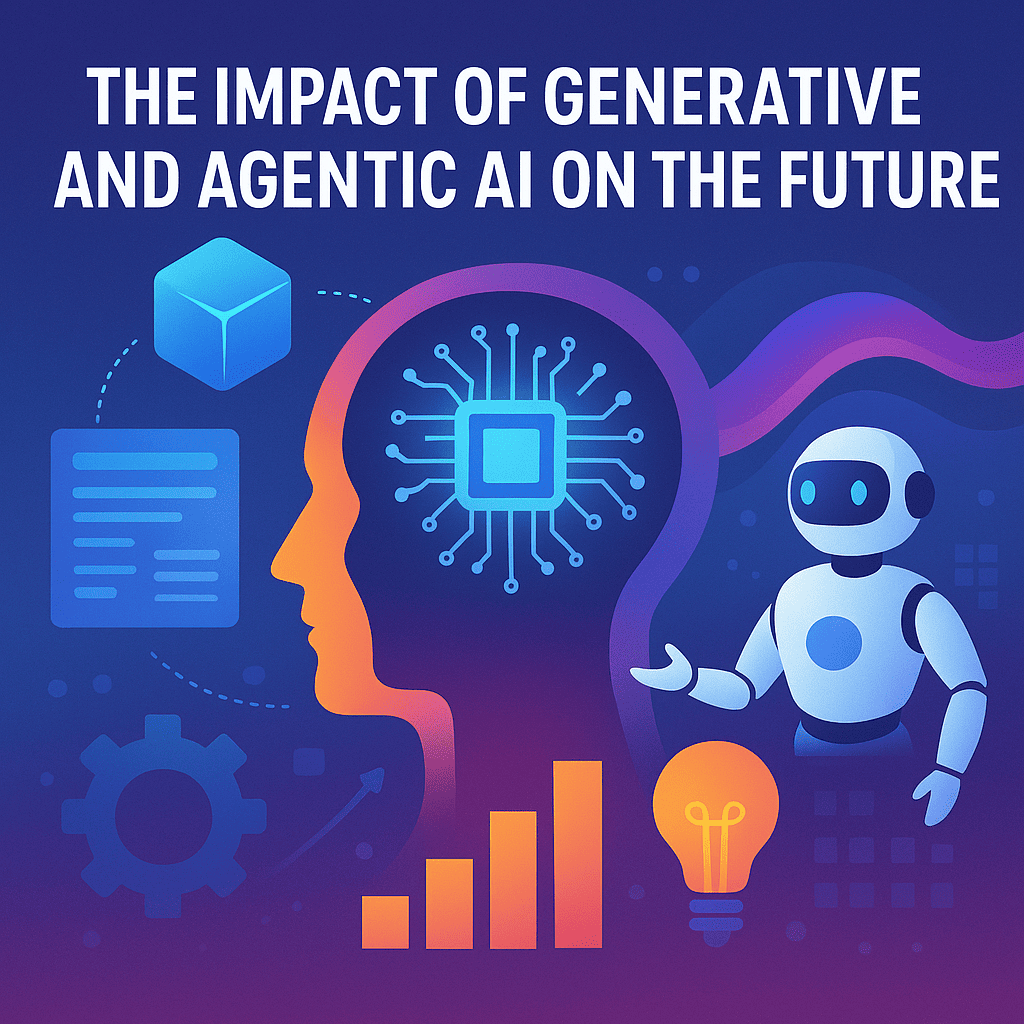Artificial Intelligence is evolving at a breathtaking pace, and two of its most transformative branches—Generative AI and Agentic AI—are redefining how we work, create, and interact with technology. While generative models have already captivated the world with their ability to produce human-like text, art, and code, the rise of agentic AI marks the next major shift: systems that can act autonomously, make decisions, and pursue goals with minimal human oversight.
Read More: The Impact of Generative and Agentic AI on the Future
Together, these technologies are not just improving productivity—they’re reshaping the very structure of innovation, industry, and human creativity.
From Creation to Autonomy: The AI Evolution
Generative AI focuses on creativity. It learns from vast datasets to produce original content—whether that’s writing a story, designing a product prototype, generating realistic video, or composing music. Tools like ChatGPT, Midjourney, and Runway have already shown how machines can collaborate with humans to turn imagination into reality in seconds.
Agentic AI, on the other hand, moves beyond creation into autonomous execution. Agentic systems can analyze data, plan tasks, make decisions, and act on them—often in real time. Imagine an AI that doesn’t just generate a marketing plan but also implements the campaign, adjusts strategy based on live data, and reports outcomes—all without direct supervision.
The fusion of these two paradigms—creative generation and autonomous action—marks the birth of a truly intelligent digital ecosystem.
Transforming Industries
1. Business and Productivity
In the corporate world, generative AI is streamlining communication, drafting reports, and automating customer interactions. When combined with agentic AI, these systems become digital teammates—capable of handling workflows, negotiating contracts, and coordinating cross-functional tasks. Businesses will operate faster, leaner, and more intelligently than ever before.
2. Education and Research
AI tutors powered by generative models already personalize learning for millions of students. With agentic capabilities, they will go a step further—tracking progress, adjusting curricula dynamically, and even connecting students to research opportunities or mentors that fit their evolving goals.
3. Healthcare
Generative AI can already assist in diagnosing diseases from imaging data or generating molecular structures for new drugs. Agentic AI will soon enable autonomous monitoring systems that manage patient care, schedule treatments, and respond to health changes proactively. The outcome: faster discovery, more efficient care, and lives saved.
4. Creativity and Media
Artists, filmmakers, and designers are using generative tools to expand creative horizons. Adding agentic intelligence means those tools could evolve into co-creators—able to understand artistic intent, provide feedback, and collaborate dynamically across projects and styles.
Challenges and Ethical Frontiers
With such power comes complexity. Generative AI raises concerns about misinformation, deepfakes, and content authenticity. Agentic AI introduces deeper questions: What happens when autonomous systems make harmful decisions? How do we assign accountability?
Society must balance innovation with governance—through transparency, regulation, and ethical frameworks. Ensuring that AI systems align with human values will be essential as we delegate more cognitive and operational authority to machines.
The Human-AI Partnership Ahead
The future isn’t about AI replacing humans—it’s about amplifying human potential. Generative AI will continue to enhance creativity, while agentic AI will extend our capacity to act. Together, they will form a powerful symbiosis that frees people from repetitive work and empowers them to focus on strategy, empathy, and imagination.
As AI evolves from a tool to a collaborator, our challenge will not just be technical—it will be philosophical. The way we design, govern, and interact with these systems will determine whether they become our partners in progress or sources of disruption.
Contant Now:
Conclusion
Generative and Agentic AI are two sides of the same revolution—creation and autonomy, imagination and action. Their convergence signals the dawn of a new era where intelligence is not confined to human minds, but shared across networks of smart, adaptive systems. The future shaped by these technologies will not simply be automated—it will be augmented. And if guided wisely, it promises to unleash a wave of creativity, efficiency, and discovery unlike anything the world has seen before.

